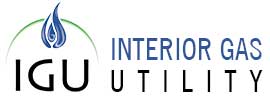Fairbanks Daily News-Miner editorial
News-Miner opinion: Gov. Bill Walker’s signing of House Bill 105 at the Carlson Center on Tuesday afternoon looked like a triumph. The governor, legislators, members of the Alaska Industrial Development and Export Authority and the Alaska Energy Authority all spoke about the difficult task of shepherding the Interior Energy Project legislation to passage. But for Interior residents, judging progress toward affordable energy can be difficult without concrete markers of steps forward. Are we closer to having natural gas in Fairbanks now than was the case six months ago? The answer is yes — but there’s still plenty to be done.
The question of what was accomplished through the passage of HB 105 can be better assessed by looking at the consequences for the project had the bill not survived the Legislature. Without it, Interior energy hopes would remain handcuffed to North Slope natural gas, which appeared unable to meet the $15 per thousand cubic foot price point necessary to make the project a success. With the bill passed, AIDEA has the flexibility needed to pursue other gas sources, most importantly Cook Inlet natural gas, that could be more economic.
“Could” isn’t the same as “will be” or “are,” of course, and getting from here to there is a task that now rests primarily in AIDEA’s lap. If legislators were looking particularly happy and relieved Tuesday afternoon, that’s likely because their role in the Interior Energy Project process should now be now largely complete. It will be AIDEA’s job this summer and fall to line up gas supply and potential contractors for liquefaction facilities, with the Legislature having only oversight responsibility to ensure the project doesn’t go off the rails.
For the bill’s passage in a workable form, the members of the Interior delegation deserve credit. Skepticism about the project was greater than expected among Southcentral legislators, including prominent members of the majority caucus. In addition to a hefty slate of committee assignments, the bill weathered an attempt to neuter its goals by skeptical lawmakers. It survived and was made whole again only by the intervention of Fairbanks legislators. Whatever their differences on other issues, on Interior energy Fairbanks and North Pole legislators pulled together.
Gov. Walker says he’s confident the $15-per-mcf price for gas at the burner tip can be achieved, which is a heartening show of support for those counting on the project to lower their home heating bills. It’s also a high bar for AIDEA to clear, and it will be the public’s job to keep an eye on the project and make sure whatever deals AIDEA arranges are compatible with the needs of local gas customers.
There are still plenty of question marks remaining between where the Interior stands today and delivered gas. But the passage of HB 105 gives the state the best tools possible to address those question marks and turn them into concrete quantities. While the shift in focus on gas supply wasn’t optimal with regard to the plan’s timetable, it was necessary to achieve the price point targeted by the project. Gas that costs homeowners as much as fuel oil is as bad as no gas at all — in fact, it would be worse, given the sums of money and time expended for no benefit.
AIDEA now has the tools it needs to move forward, and the public should continue to monitor progress throughout the summer and fall to ensure further slippage in time or gas price doesn’t occur. It’s good to be in a position where forward motion can take place once again on gas for Fairbanks and North Pole.
